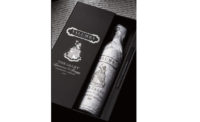For the beverage industry, the power of packaging has never been more important — new entrants into the space can literally live or die by it. With the global marketplace becoming more crowded, the opportunity to get noticed on-shelf or online is more competitive than ever.
All brands are trying to reach consumers, break through the clutter, make an emotional connection, drive loyalty and repeat purchase. It’s a tall task and a huge ask, but those who are building brands and trying to be innovative in the complex world of consumer goods know that the success or failure of a product can hinge on the packaging. This truly is an industry where it is entirely appropriate to judge a book by its cover — and where a first impression is everything.
Here are three key elements needed for impactful wine packaging:
1. Tell a Story via Art-Inspired Visual Identity.
We are moving away from the traditional artwork that simply depicts a regional vineyard to suggest quality of ingredients. Instead, we’re moving toward more unique and personal designs. Across all industries we have seen how brands have harnessed the creativity and brand power of established designers to create unique and one-of-a-kind packaging in order to drive conversation. Storytelling through design, when done right, sets the tone of the wine experience. The right artist is able to use design to tell a brand’s story in an instant. I believe this is most successful when the visual identity and the creation of the packaging is part of the DNA of the brand and not just a one-off. We see a lot of brands doing capsule-like collections or limited-edition packaging. All of this is great, but my feeling is that this is most successful when the design is integrated into the overall philosophy of the brand.
2. Create an Emotional Connection.
We have witnessed a lot of effort applied to creating connections, a concept which can seem like a combination of voodoo and science. Trying to make an emotional connection with consumers is not easy, especially for new brands and new entrants into mature categories. One of the techniques I’ve noticed is what I call “return to familiarity,” where brands use colors and images to remind a core consumer of the past and, therefore, connect the brand to a happy time in one’s life. This can be both subtle and sometimes in your face as a tactic for making a strong emotional connection. The key to connection is authenticity. Design that is true to the brand resonates with consumers.
3. Create New Products and Usage Occasions.
At the moment everyone has the same goal: to make their products mobile. This is one key driver pushing product design to its limits. In the beverage sector new formats are pushing new usage occasions. Thinking beyond the bottle and capitalizing on what consumers want can lead to industry breakthroughs.
For example, the development of the wine industry’s first wine in a can in 2014 became a game-changer. It took the industry a while to catch on, but now it is ranked as one of the most important developments. The impact has been to allow consumers to drink wine on-the-go and in smaller-sized packages at any place at any time. Tetra Paks have also been a key driver of this shift. These formats have allowed wine to be more accessible and available for purchase in new locations as well.
To gain traction of competitors, I suggest making high-quality products that can be purchased at convenience stores, which is a new way of thinking about an industry that has struggled to abandon the classic Bordeaux-shaped bottle.
Popping the cork on wine has also been a huge move in the industry, with many consumers calling the shift to screw-top bottles a life-changing innovation.
Overall, these innovations have democratized the wine industry and, as a result, we are seeing the entire industry move its focus and deliver new ways of thinking to serve the needs of the ever-changing consumer.
|
Big Flavor, Small Footprint
Tea is again becoming one of America’s favorite beverages. This time, however, it’s not grandmothers’ soothing brews capturing palates, but rather a more exotic, fermented tea: kombucha, a probiotic beverage created more than 2,000 years ago in Eurasia that is thought to aid the digestive system. Ethan and Kate Zuckerman, founders of Virginia-based Blue Ridge Bucha, a kombucha manufacturing and distribution company, created the business with one mission: to make delicious kombucha sustainably by using refillable bottles. When the Zuckermans began producing kombucha in 2010, they often sold the tangy beverage out of their Honda Civic in six-packs behind a restaurant in Charlottesville, Va. They invested $4,000 of their own money — and countless hours of manufacturing work — to get the business off the ground. Initially, Blue Ridge Bucha locally distributed the six-packs in refillable bottles and then would collect the bottles, wash them and reuse them. The refillable bottles are made of glass and come in 12-oz., 32-oz. and 64-oz. sizes. The 12-oz. bottle has a swingtop closure, and the 32- and 64-oz. sizes use screw-on caps. A year later in 2011, the small business steered to a more commercial direction and began selling the beverage in kegs to bars, restaurants and independent grocery stores. With a background in building and sustainable systems, Ethan built almost every piece of equipment. The beverages are certified organic and made from pure Blue Ridge Mountain water. Every part of the process — from brewing to bottling to flavoring — is doned by hand. Because the kombucha is kegged and available on draft, the company hopes to make customers more conscious drinkers by bringing in their own bottles or purchasing one of Blue Ridge Bucha’s refillable bottles to fill with any of their eight flavors at various fountain locations. Most of Blue Ridge Bucha’s participating retailers also allow customers to fill their own bottle. Kate and Ethan actively look for additional ways to reduce their carbon footprint. For example, they screen-print their bottles locally, use reclaimed wood to make the tap handles and compost their brewery waste to grow their gardens. The duo is now distributing multiple kombucha flavors to more than 80 locations in Virginia, Maryland, Washington, D.C. and North Carolina, including Whole Foods stores. To date, the company’s refillable bottles and draft systems have saved more than 800,000 bottles from landfills. Blue Ridge Bucha was recently awarded the “Outstanding American Manufacturing Small Business” by SCORE, a nonprofit that helps small businesses get off the ground and grow through mentorships. Through SCORE’s help, Kate and Ethan opened their first taproom and brewery in Waynesboro, Va. in June 2018. They plan to use the space to show customers their sustainability methods and encourage customers to adopt and invent new methods through workshops, tours and other programs. For information, check out blueridgebucha.com. |







